Artículos SCI
2017
2017
Nanotecnología en Superficies y Plasma
High performance novel gadolinium doped ceria/yttria stabilized zirconia/nickel layered and hybrid thin film anodes for application in solid oxide fuel cells
Garcia-Garcia, FJ; Beltran, AM; Yubero, E; Gonzalez-Elipe, AR; Lambert, RMJournal of Power Sources, 363 (2017) 251-259
Show abstract ▽

Magnetron sputtering under oblique angle deposition was used to produce Ni-containing ultra thin film anodes comprising alternating layers of,gadolinium doped ceria (GDC) and yttria stabilized zirconia (YSZ) of either 200 nm or 1000 nm thickness. The evolution of film structure from initial deposition, through calcination and final reduction was examined by XRD, SEM, TEM and TOF-SIMS. After subsequent fuel cell usage, the porous columnar architecture of the two-component layered thin film anodes was maintained and their resistance to delamination from the underlying YSZ electrolyte was superior to that of corresponding single component Ni-YSZ and Ni-GDC thin films. Moreover, the fuel cell performance of the 200 nm layered anodes compared favorably with conventional commercially available thick anodes. The observed dependence of fuel cell performance on individual layer thicknesses prompted study of equivalent but more easily fabricated hybrid anodes consisting of simultaneously deposited Ni-GDC and Ni-YSZ, which procedure resulted in exceptionally intimate mixing and interaction of the components. The hybrids exhibited very unusual and favorable I-V characteristics, along with exceptionally high power densities at high currents. Their discovery is the principal contribution of the present work.
Septiembre, 2017 | DOI: 10.1016/j.jpowsour.2017.07.085
Materiales Coloidales
Europium-doped NaGd(WO4)(2) nanophosphors: synthesis, luminescence and their coating with fluorescein for pH sensing
Laguna, M; Escudero, A; Nuñez, NO; Becerro, AI; Ocaña, MDalton Transactions, 46 (2017) 11575-11583
Show abstract ▽
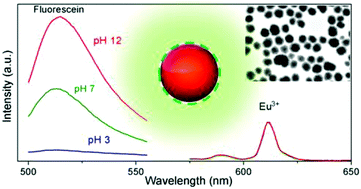
Uniform Eu-doped NaGd(WO4)(2) nanophosphors with a spherical shape have been synthesized for the first time by using a wet chemistry method based on a homogeneous precipitation process at low temperature (120 degrees C) in ethylene glycol/water mixtures. The obtained nanoparticles crystallized into the tetragonal structure and presented polycrystalline character. The europium content in such phosphors has been optimized through the analysis of the luminescence dynamics (lifetime measurements). By coating the Eu3+-doped wolframate based nanoparticles with fluorescein through a layer-by-layer (LbL) approach, a wide range (4-10) ratiometric pH-sensitive sensor has been developed, which uses the pH insensitive emission of Eu3+ as a reference.
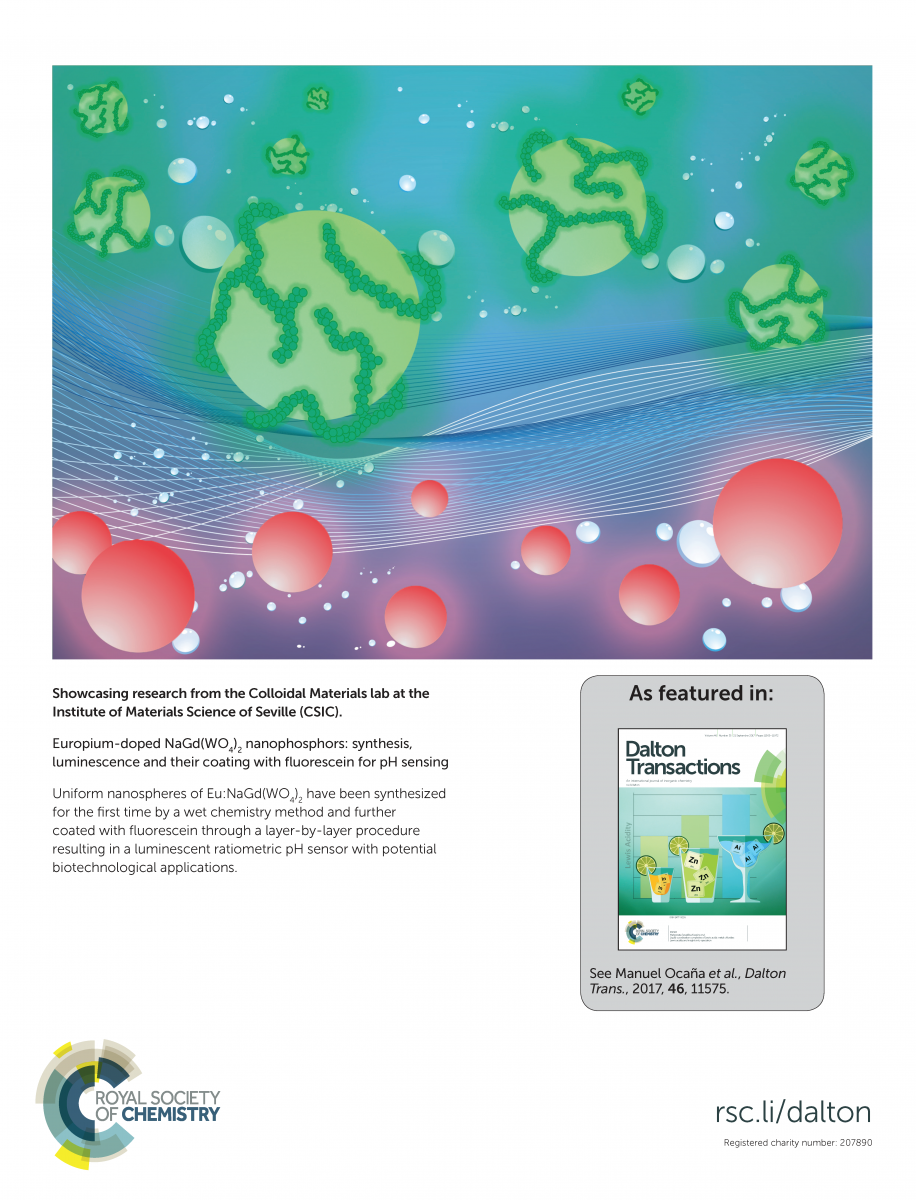
Septiembre, 2017 | DOI: 10.1039/c7dt01986f
Nanotecnología en Superficies y Plasma
In Vitro and in Vivo Study of Poly(Lactic-co-Glycolic) (PLGA) Membranes Treated with Oxygen Plasma and Coated with Nanostructured Hydroxyapatite Ultrathin Films for Guided Bone Regeneration Processes
Torres-Lagares, D; Castellanos-Cosano, L; Serrera-Figallo, MA; Garcia-Garcia, FJ; Lopez-Santos, C; Barranco, A; Elipe, ARG; Rivera-Jimenez, C; Gutierrez-Perez, JLPolymers, 9 (2017) art. 410
Show abstract ▽
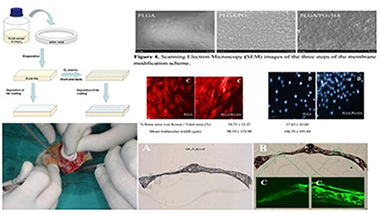
The novelty of this study is the addition of an ultrathin layer of nanostructured hydroxyapatite (HA) on oxygen plasmamodified poly(lactic-co-glycolic) (PLGA) membranes (PO2) in order to evaluate the efficiency of this novel material in bone regeneration. Methods: Two groups of regenerative membranes were prepared: PLGA (control) and PLGA/PO2/HA (experimental). These membranes were subjected to cell cultures and then used to cover bone defects prepared on the skulls of eight experimental rabbits. Results: Cell morphology and adhesion of the osteoblasts to the membranes showed that the osteoblasts bound to PLGA were smaller and with a lower number of adhered cells than the osteoblasts bound to the PLGA/PO2/HA membrane (p < 0.05). The PLGA/PO2/HA membrane had a higher percentage of viable cells bound than the control membrane (p < 0.05). Both micro-CT and histological evaluation confirmed that PLGA/PO2/HA membranes enhance bone regeneration. A statistically significant difference in the percentage of osteoid area in relation to the total area between both groups was found. Conclusions: The incorporation of nanometric layers of nanostructured HA into PLGA membranes modified with PO2 might be considered for the regeneration of bone defects. PLGA/PO2/HA membranes promote higher osteosynthetic activity, new bone formation, and mineralisation than the PLGA control group.
Septiembre, 2017 | DOI: 10.3390/polym9090410
Materiales Coloidales
Rare earth based nanostructured materials: synthesis, functionalization, properties and bioimaging and biosensing applications
Escudero, Alberto; Becerro, Ana I.; Carrillo-Carrion, Carolina; Nunez, Nuria O.; Zyuzin, Mikhail V.; Laguna, Mariano; Gonzalez-Mancebo, Daniel; Ocana, Manuel; Parak, Wolfgang J.Nanophotonics, 6 (2017) 881-921
Show abstract ▽
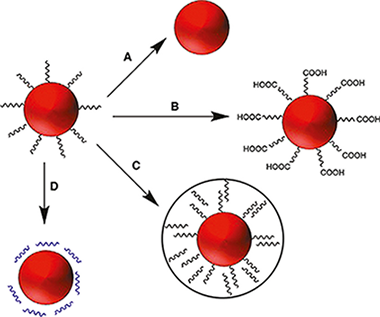
Rare earth based nanostructures constitute a type of functional materials widely used and studied in the recent literature. The purpose of this review is to provide a general and comprehensive overview of the current state of the art, with special focus on the commonly employed synthesis methods and functionalization strategies of rare earth based nanoparticles and on their different bioimaging and biosensing applications. The luminescent (including downconversion, upconversion and permanent luminescence) and magnetic properties of rare earth based nanoparticles, as well as their ability to absorb X-rays, will also be explained and connected with their luminescent, magnetic resonance and X-ray computed tomography bioimaging applications, respectively. This review is not only restricted to nanoparticles, and recent advances reported for in other nanostructures containing rare earths, such as metal organic frameworks and lanthanide complexes conjugated with biological structures, will also be commented on.
Septiembre, 2017 | DOI: 10.1515/nanoph-2017-0007
Materiales de Diseño para la Energía y Medioambiente
High-temperature thermal conductivity of biomorphic SiC/Si ceramics
Ramirez-Rico, J.; Singh, M.; Zhu, D.; Martinez-Fernandez, J.Journal of Materials Science, 52 (2017) 10038-10046
Show abstract ▽
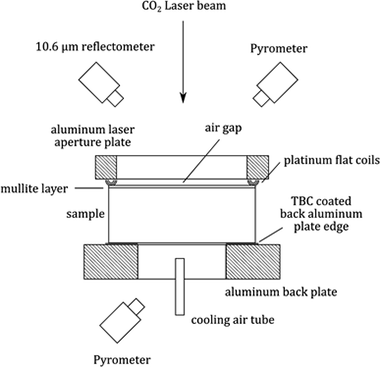
Thermal conductivity of biomorphic SiC/Si, a silicon carbide + silicon containing two phase material, was evaluated using the laser steady-state heat flux method. These materials were processed via silicon melt infiltration of wood-derived carbon scaffolds. In this approach, heat flux was measured through the thickness when one side of the specimen was heated with a 10.6-A mu m CO2 laser. A thin mullite layer was applied to the heated surface to ensure absorption and minimize reflection losses, as well as to ensure a consistent emissivity to facilitate radiative loss corrections. The influence of the mullite layer was accounted for in the thermal conductivity calculations. The effect of microstructure and composition (inherited from the wood carbonaceous performs) on measured conductivity was evaluated. To establish a baseline for comparison, a dense, commercially available sintered SiC ceramic was also evaluated. It was observed that at a given temperature, thermal conductivity falls between that of single-crystal silicon and fine-grained polycrystalline SiC and can be rationalized in terms of the SiC volume fraction in biomorphic SiC/Si material.
Septiembre, 2017 | DOI: 10.1007/s10853-017-1199-y
- ‹ anterior
- 185 of 420
- siguiente ›














